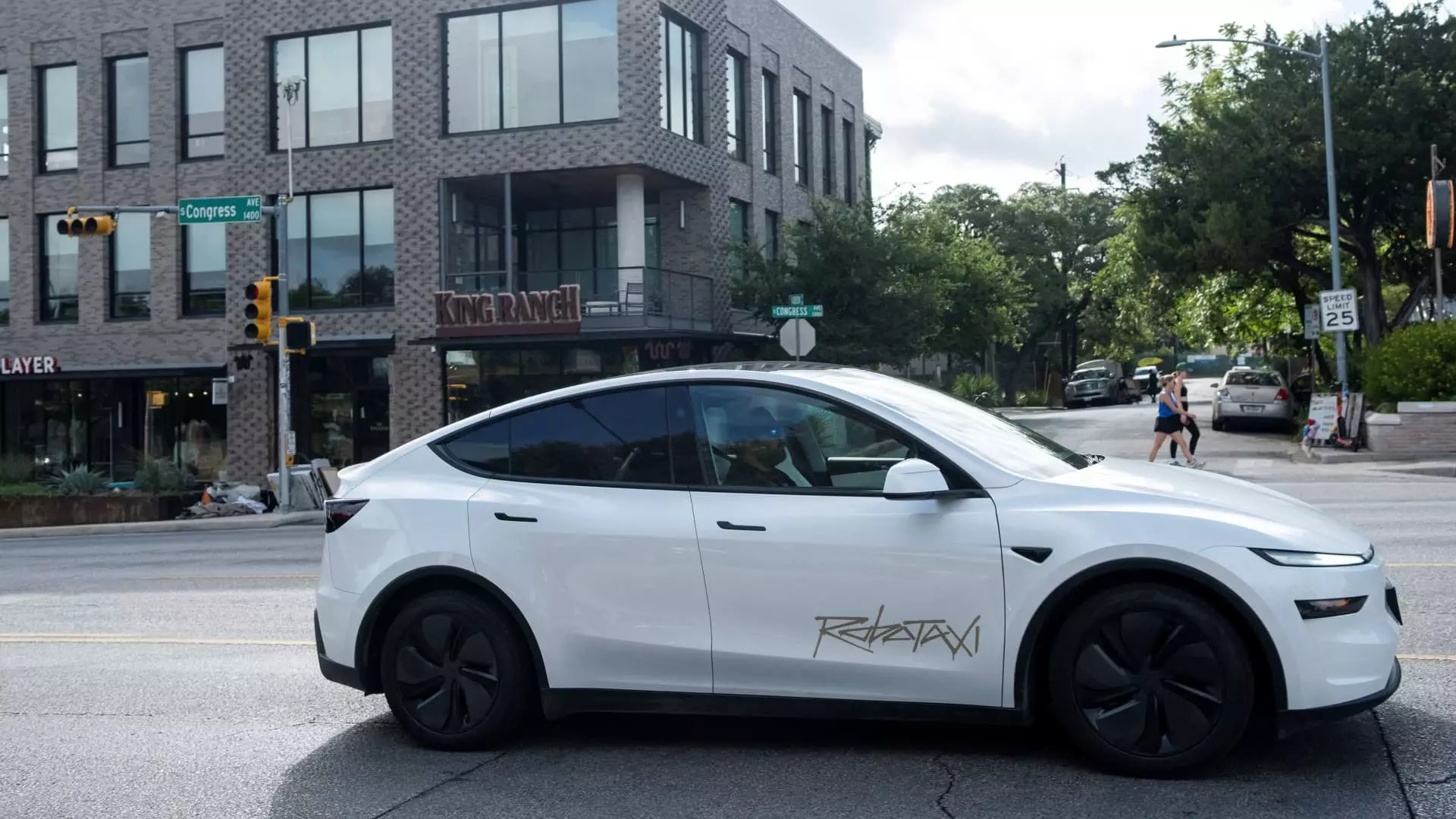Tesla’s recent entry into the autonomous taxi arena in Austin, Texas, has sparked a flurry of reactions that oscillate between excitement and apprehension. The company, led by the ever-ambitious Elon Musk, launched an invitation-only robotaxi service shrouded in an air of technological promise. However, initial exposure to the real world has revealed a disconcerting array of mishaps caught on camera, as videos of these robots navigating the public streets surfaced online. As a result, the National Highway Traffic Safety Administration (NHTSA) has initiated inquiries into Tesla’s robotaxi operations, raising fundamental questions about safety protocols and regulatory oversight in innovative automotive technology.
Feedback from the Public and Regulatory Entities
The NHTSA’s concern underscores the tension between innovation and public safety. The agency’s responsive communication indicates that they are meticulously monitoring Tesla’s foray into fully autonomous driving. Notably, incidents documented in viral videos—including a robotaxi driving on the wrong side of the road and behaving erratically in response to stationary emergency vehicles—paint a worrisome picture. It is compelling to consider whether these technological advancements are being rolled out too quickly without adequate real-world testing. When a vehicle is tasked with dynamically interacting with unpredictable human drivers and pedestrians, the stakes are higher than ever.
Furthermore, Tesla’s defense mechanism appears to be one of self-certification. The NHTSA does not pre-approve vehicle technologies but relies on automakers to validate their compliance with safety standards. This posture raises a larger issue about the trustworthiness of self-certification, particularly when past safety record investigations into Tesla have already flagged concerns regarding its Full Self-Driving (FSD) technology.
The Ambitious Promises and Reality Check
Musk’s vocal enthusiasm over the years has set ambitious timelines for autonomy, including claims that a Tesla would navigate the roads entirely without human intervention by 2017. Yet, the arrival of the robotaxi service feels more like a step backward than a leap forward in fulfilling those prophecies. The disparity between promised timelines and the current state of technology speaks volumes about the challenges that even pioneering firms can encounter in the rapidly evolving automotive landscape.
Tesla’s eagerness to outpace competitors like Waymo, which recently celebrated its 10 millionth paid ride, coupled with challengers such as Baidu and Pony.ai, highlights a sense of urgency. The expectation to not only match competitors but also to lead the sector seems to be driving decisions that may prioritizes speed over safety. As such, it raises the question of whether the company’s intrinsic drive for market leadership compromises the stringent safety protocols that consumers rightly expect.
The Role of Invited Users and Consumer Trust
The invitation-only nature of the robotaxi pilot further complicates understanding the true efficacy of the service. Most participants appear to be Tesla enthusiasts and stakeholders, potentially skewing feedback and undermining trust in objective assessments of the service’s safety and functionality. It is crucial to recognize that a more diverse demographic reflecting real-world conditions is essential for accurately assessing how these vehicles perform outside of controlled conditions.
One cannot help but wonder if the initial flurry of excitement and the reported 8% surge in Tesla shares post-launch overshadow the legitimate concerns raised by users, regulators, and detractors alike. The mere exclusion of the broad populace from the testing process could lead to a superficial appraisal of the service’s impact on public roads, leading to an unprepared and possibly unsafe broader rollout.
A Balanced Perspective: Progress vs. Safety
Navigating the road ahead requires a careful balance of technological fervor and public safety. As we embrace the era of automation, it is of utmost importance that the ethos surrounding innovation involves rigorous testing, transparency, and accountability. Tesla’s bold venture into robotaxis has indeed ushered in an age of unprecedented possibilities, but the chaotic incidents witnessed raise fundamental questions that must be addressed in the pursuit of a safer, autonomous future. The conversation about safety should not be overshadowed by excitement; rather, it should be the cornerstone upon which the autonomous driving narrative is built.

